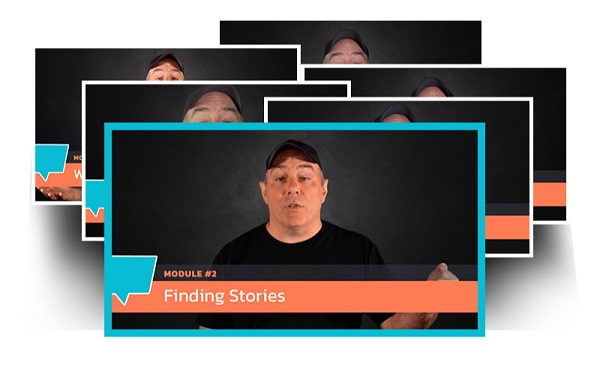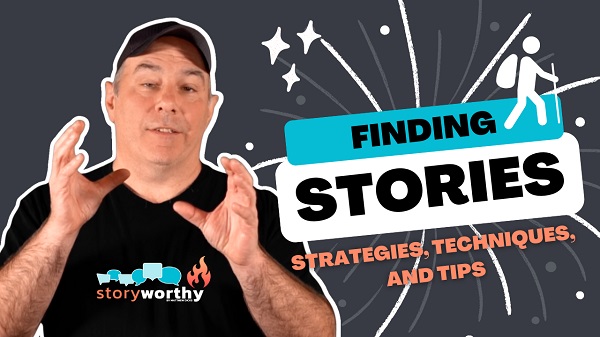The Scriptfella Program – Dominic Morgan
$29.00
Discount 20% if your total cart over $150
- Satisfaction Guaranteed
- Fast and forever download link
- Secure Payments
- Reupload FREE
Description
Ready to break into Hollywood? This article unveils a potent solution to a common screenwriter’s roadblock, offering insights into overcoming the “Screenwriting Wall” and highlighting the importance of learning how to write for the industry reader and a transformative free screenwriting course.
Free Screenwriting Course
Aspiring screenwriters often find themselves in a frustrating limbo. They’ve honed their craft, written compelling stories, poured countless hours and resources into their scripts, yet struggle to gain traction in Hollywood. This is the infamous “Screenwriting Wall,” a point where technical proficiency meets industry indifference. While access to resources like a free screenwriting course can be invaluable, the real key is understanding what Hollywood readers are looking for.
Understanding The Screenwriting Wall: More Than Just a Good Story
The “Screenwriting Wall” isn’t just about writing a good story. It’s about writing a great story in a way that captivates industry readers – agents, managers, and producers – from the very first page. It’s a harsh reality check for many writers who believe that a technically sound script is enough. But in a sea of screenplays, yours needs to stand out, not just for the plot, but for the way it’s presented. The frustration stems from a lack of specific feedback and a sense of being stuck, unable to improve despite continued effort which can sometime be resolved by a free screenwriting course.
It highlights a critical disconnect: writers are often trained to focus on plot, character development, and dialogue, overlooking the crucial art of engaging the reader. Think of it like this: you can bake a delicious cake, but if it’s poorly decorated and badly presented, few will be tempted to try it. Similarly, a brilliant script can be ignored if it’s not presented in a way that hooks the reader from the outset.
Consider the staggering number of scripts circulating in Hollywood. Agents and producers are bombarded daily. They simply don’t have the time to wade through dull prose or decipher confusing formatting. If your script doesn’t grab them within the first few pages, it’s likely to end up in the rejection pile. This is where understanding cinematic language, pacing, and immersive writing techniques become invaluable, and where a free screenwriting course can prove helpful. It’s about crafting an experience for the reader, not just telling a story.
Engaging the Industry Reader: The Hollywood Gatekeepers
The industry reader is the gatekeeper. They are the initial audience you must impress to get your script into the hands of influential figures. This means learning to write for them, understanding their expectations, and catering to their tastes. It’s not about compromising your artistic vision, but about understanding how to package it in a way that resonates with the Hollywood ecosystem.
Imagine you’re pitching a product to a potential investor. You wouldn’t just present the technical specifications. You’d focus on the benefits, the market potential, and the unique selling points – all delivered in a compelling and concise manner. The same principle applies to screenwriting. You need to sell your story to the reader, showcasing its potential as a successful film or television show.
This requires mastering the art of cinematic language: using vivid imagery, sound design, and a distinctive narrative voice to create an immersive experience for the reader. It also means avoiding common pitfalls like overwriting, dull descriptions, and passive voice. Your goal is to make the reader’s job easy, to transport them into the world of your story, and to leave them wanting more. A free screenwriting course can be a good first step.
Cinematic Language and Readability: Beyond the Story
Overcoming the “Screenwriting Wall” requires a shift in focus from simply telling the story to crafting a cinematic experience on the page. It’s about using language that translates well to the screen, painting vivid pictures in the reader’s mind, and creating a sense of immersion. This involves mastering the art of “showing” rather than “telling,” employing visual storytelling techniques, and utilizing sound design to enhance the atmosphere.
Think about your favorite films. What makes them so engaging? It’s not just the plot; it’s the way the story is told through visuals, sound, and performance. As a screenwriter, you need to capture that essence on the page, using your words to create a cinematic experience for the reader. This means avoiding lengthy descriptions and focusing on concise, impactful imagery.
For example, instead of writing “The room was dark and mysterious,” you could write “Shadows danced across the walls, illuminated only by a flickering candle.” The latter creates a more vivid and immersive experience for the reader, allowing them to visualize the scene more easily. This focused approach is often explored in a free screenwriting course.
Free Screenwriting Courses: A Starting Point
While mastering the art of writing for the Hollywood reader requires dedicated effort and often professional guidance, a free screenwriting course can provide a valuable foundation. These courses often cover the basics of screenwriting structure, character development, and dialogue, providing aspiring writers with a solid framework to build upon.
However, it’s important to recognize the limitations of free resources. While they can provide an introduction to the fundamentals, they often lack the personalized feedback and industry insights needed to truly break through the “Screenwriting Wall.” Think of it as learning the basic chords on a guitar – you’ll need more than that to become a rock star.
Nevertheless, a free screenwriting course can be a great way to test the waters, explore your interest in screenwriting, and acquire some fundamental knowledge. Just remember to supplement your learning with additional resources, feedback from experienced writers, and a willingness to continuously improve your craft.
Screenwriting Intensive
The challenges screenwriters face when trying to go from “quite good” to industry-ready are multifaceted, but one thing is certain: a screenwriting intensive can truly help those who are eager to overcome these hurdles.
The Limitations of Self-Learning and Traditional Education
While books, online tutorials, and even traditional film school can provide a foundation in screenwriting, they often fall short in addressing the specific challenges of engaging the Hollywood reader. Self-learning can be inconsistent and lack critical feedback, while traditional education may focus more on theory than practical application. This is where a screenwriting intensive can bridge the gap.
Imagine trying to learn a complex surgical procedure solely from a textbook. You might understand the theory, but you’d lack the hands-on experience and real-time feedback necessary to perform the procedure successfully. Similarly, screenwriting requires more than just theoretical knowledge; it requires practical application, personalized guidance, and a deep understanding of the industry’s expectations.
Traditional screenwriting courses often focus on plot structure, character development, and dialogue, but neglect the crucial aspects of cinematic language, immersive writing, and crafting a script that’s specifically tailored to the Hollywood reader. They may also lack the industry connections and insider knowledge needed to navigate the complex world of agents, managers, and producers. A screenwriting intensive pushes past academic concepts and dives headfirst into crafting a marketable script that gets noticed, adding practical value to the theoretical foundations of the common classroom.
The Power of Focused Training: A Screenwriting Intensive
A screenwriting intensive offers a structured and focused approach to addressing the specific challenges of breaking into the industry. These programs often incorporate hands-on exercises, personalized feedback, and mentorship from experienced screenwriters, providing aspiring writers with the tools and knowledge they need to elevate their craft and stand out from the competition.
Think of it like an athletic training camp. Athletes don’t just work out on their own; they seek the guidance of experienced coaches who can identify their weaknesses, develop personalized training plans, and push them to their limits. Similarly, a screenwriting intensive provides aspiring writers with the coaching and guidance they need to unlock their potential and achieve their goals.
These programs often focus on specific areas, like cinematic language, immersive writing, and crafting a script that’s specifically tailored to the Hollywood reader. The emphasis is on practicality and application, helping writers transform their theoretical knowledge into tangible skills that can be used to elevate their scripts. By going beyond the basics, a screenwriting intensive equips writers with the ability to create captivating stories that break through the noise and command attention.
Building Your Unique Voice and Brand
One of the key goals of a good screenwriting intensive is to help writers discover and cultivate their unique voice. This is crucial for standing out in a competitive industry. Your voice is what sets you apart from other writers, it’s your perspective, your style, your way of seeing the world and translating it onto the page. Developing your unique voice can be the key to getting noticed by managers and agents.
Imagine it like a musician finding their signature sound. Developing this voice takes experimentation, practice and a degree of self-discovery. It is the unique fingerprint you leave on your scripts. A screenwriting intensive can help you identify your strengths, explore different styles, and refine your voice until it becomes a powerful tool for captivating the reader.
Finding your unique voice gives your screenplays the authenticity that separates your work from the rest. Managers and agents are not just looking for good writers, they are looking for the unique voices that will resonate in their portfolios.
The Scriptfella Program Example: A Structured Solution in Detail
The Scriptfella Program, as described in the provided text, exemplifies a structured approach to overcoming the Screenwriting Wall. Led by WGA screenwriter Dominic Morgan, the program is designed to teach screenwriters how to write for the Hollywood reader and improve their script’s marketability. It emphasizes practical application, reinforced learning, and personalized feedback, providing aspiring writers with the tools and knowledge they need to succeed.
The program’s structure is broken down into weeks, with specific topics covering cinematic screenwriting, narrative voice, immersive screenwriting, line-by-line training, and screenplay optimization. This structured approach allows writers to progressively develop their skills and address specific weaknesses. The emphasis on line-by-line training is particularly valuable, as it provides writers with concrete examples of how to improve their writing and avoid common pitfalls.
Dominic Morgan’s extensive experience as a professional screenwriter in both London and Hollywood lends credibility to the program. His WGA membership and track record of commissioned and optioned screenplays demonstrate his expertise and provide aspiring writers with confidence in his guidance. The program’s features, including intensive video training, extended access, assignments, actionable steps, and access to an alumni group, further enhance its value and provide writers with a comprehensive learning experience. In a similar vein, a screenwriting intensive can be modeled after this structure to produce valuable learning.
Conclusion
The journey to becoming a successful screenwriter is fraught with challenges, and recognizing the “Screenwriting Wall” is a major step toward overcoming it. While good writing is essential, captivating industry readers with compelling narratives and cinematic language is crucial for breaking through. Programs such as The Scriptfella, and even a free screenwriting course, offer structured guidance and emphasize readability, voice development, and practical skills. By mastering these elements, aspiring screenwriters can increase their chances of capturing Hollywood’s attention and opening doors to professional opportunities. Furthermore, a screenwriting intensive can also address limitations in other areas of your screenwriting education.
Sales Page:_https://www.scriptfella.com/the-scriptfella-program






 Matthew Dicks - Finding Stories
Matthew Dicks - Finding Stories  Matthew Dicks - Anatomy of a Story
Matthew Dicks - Anatomy of a Story